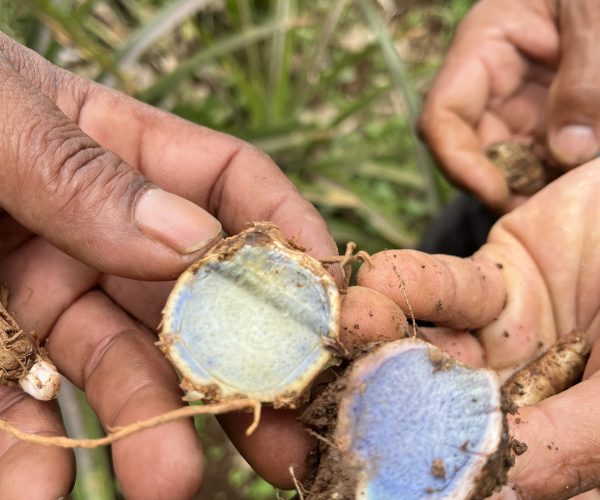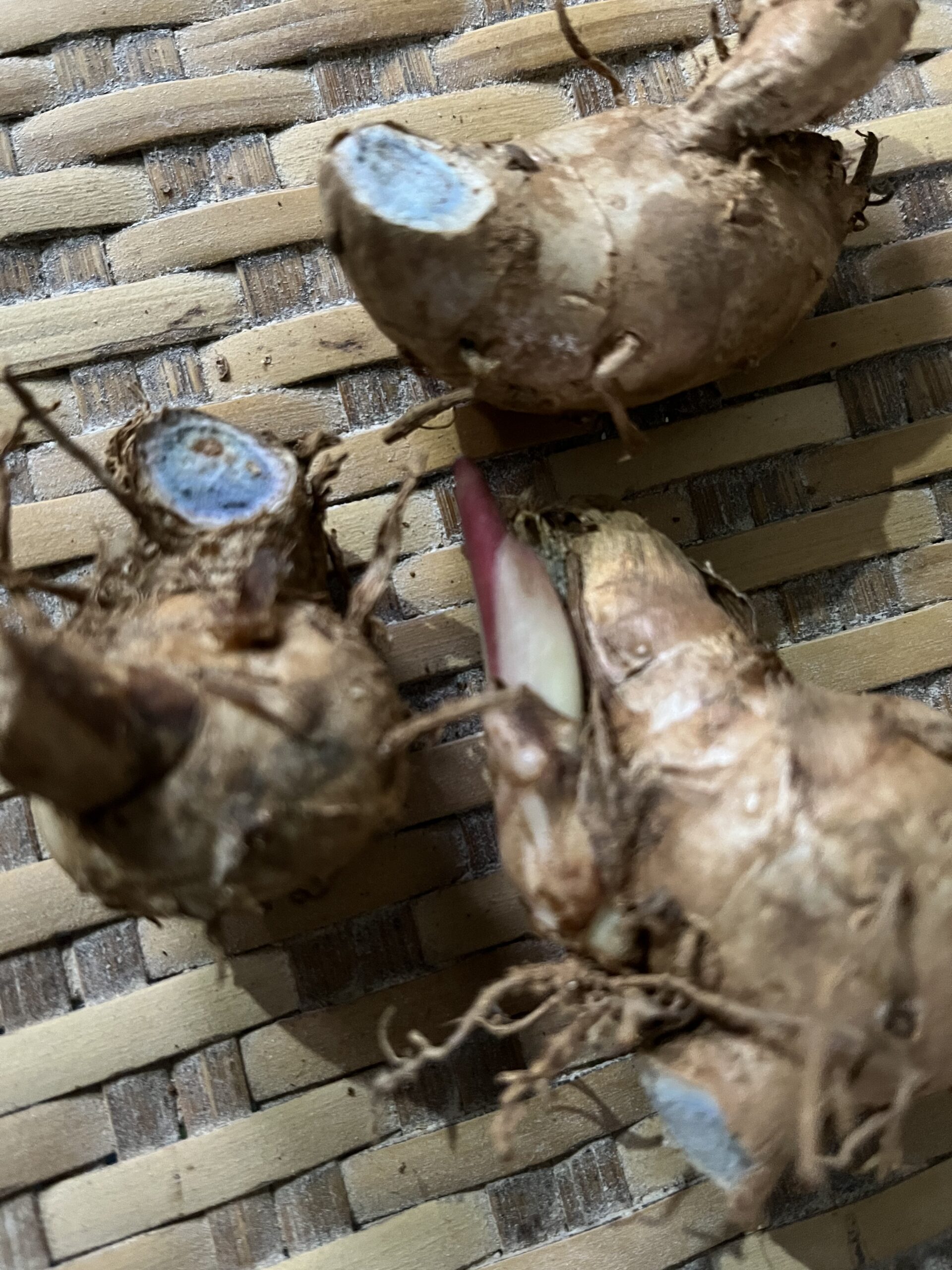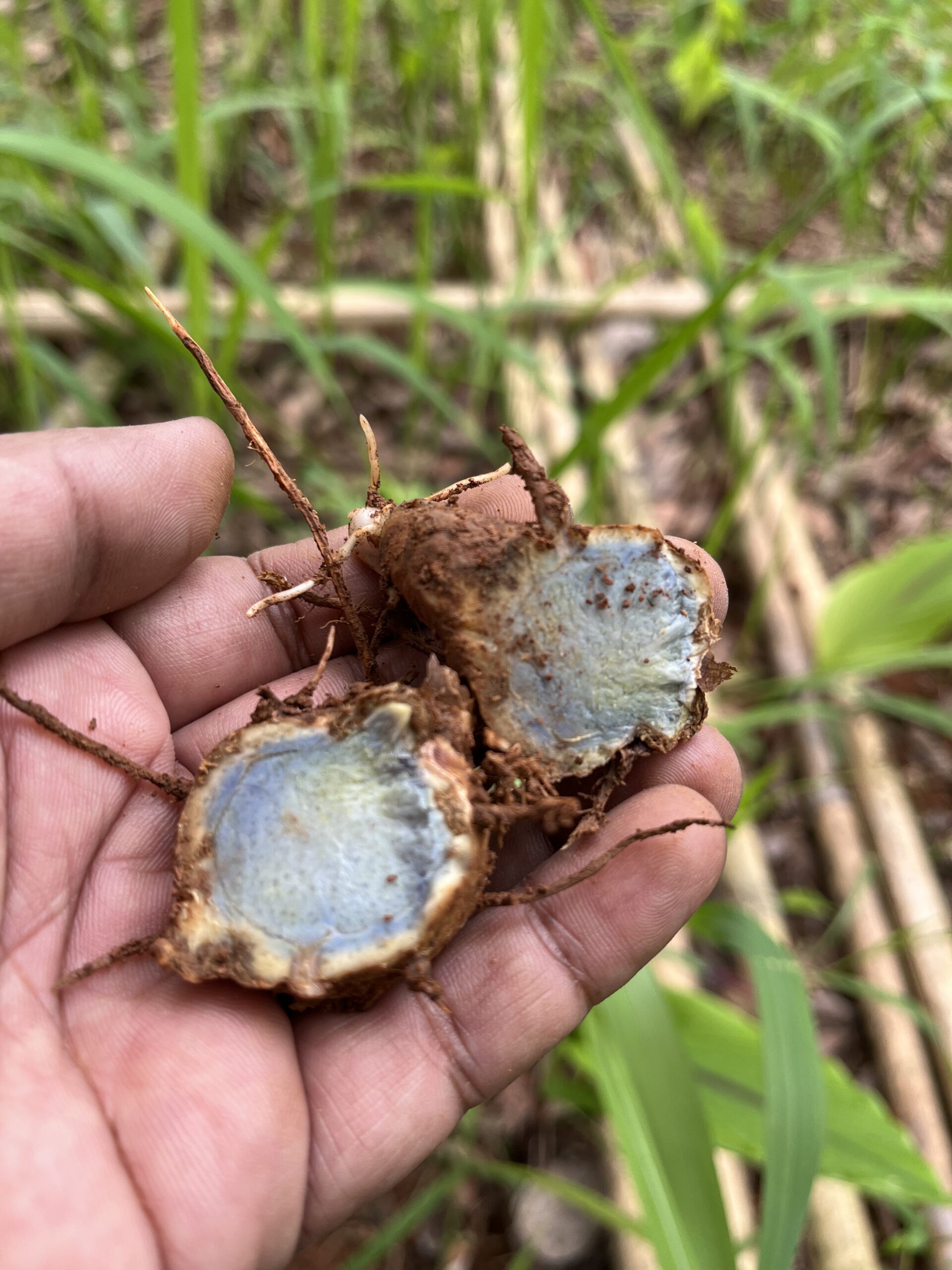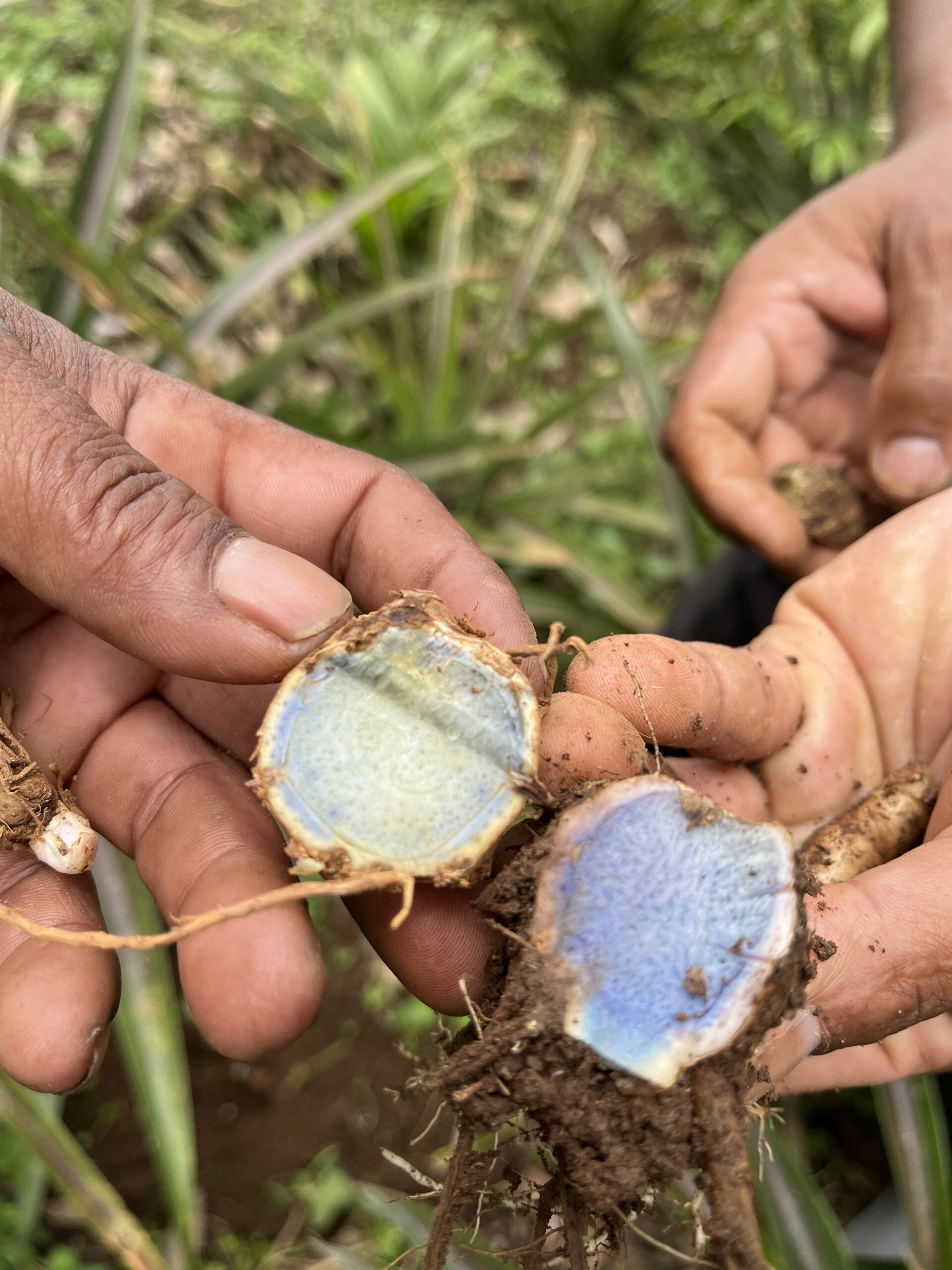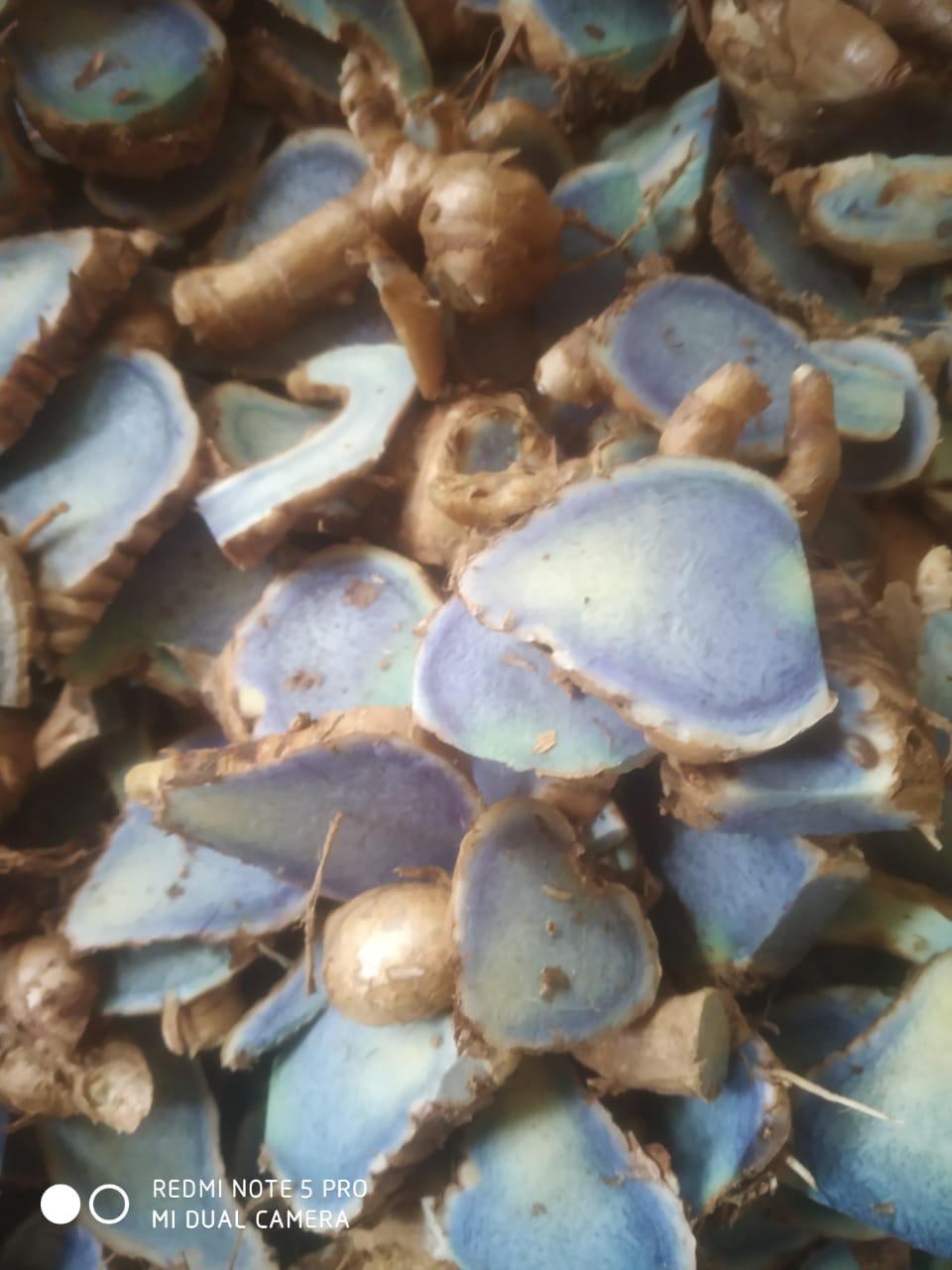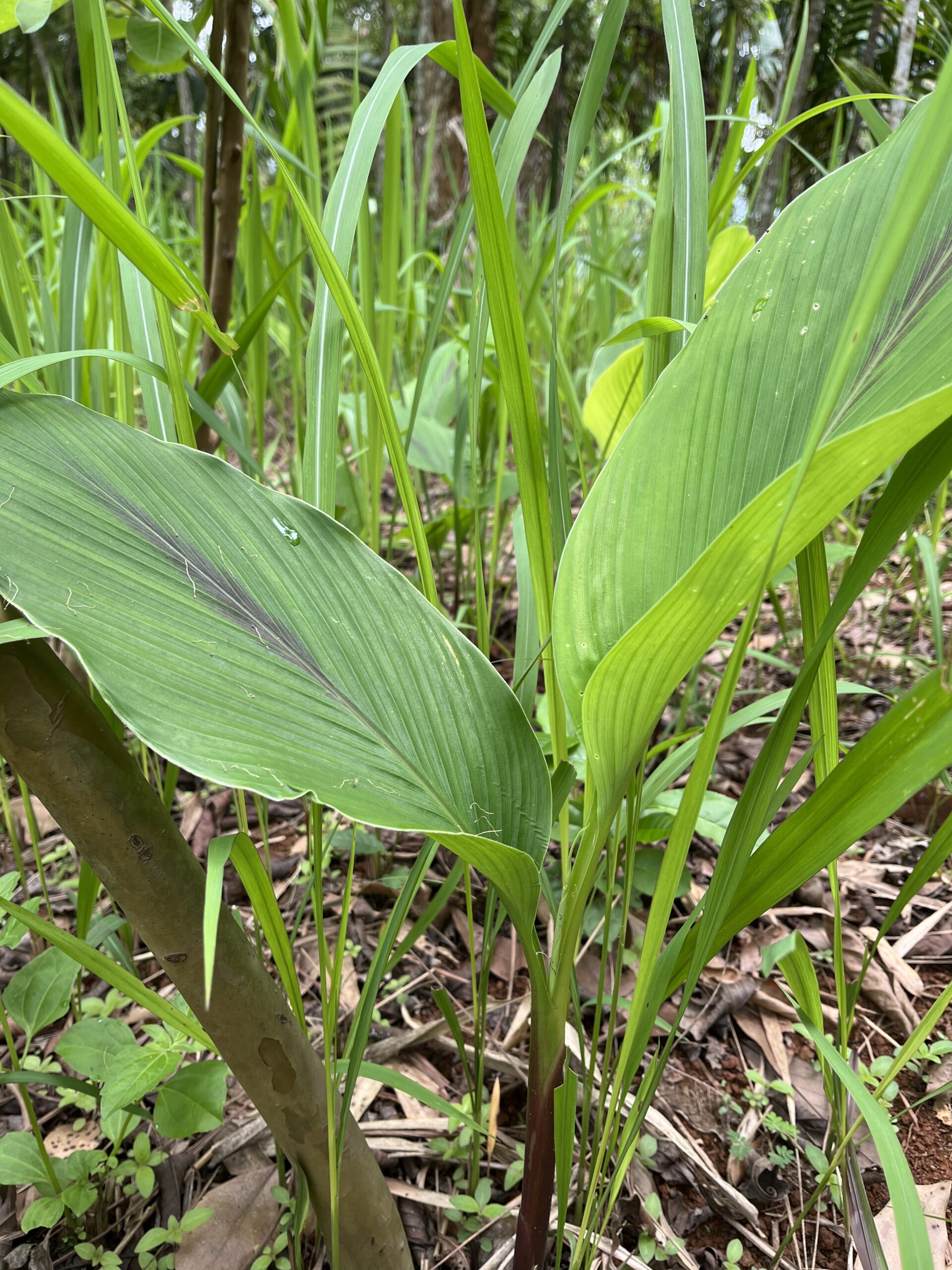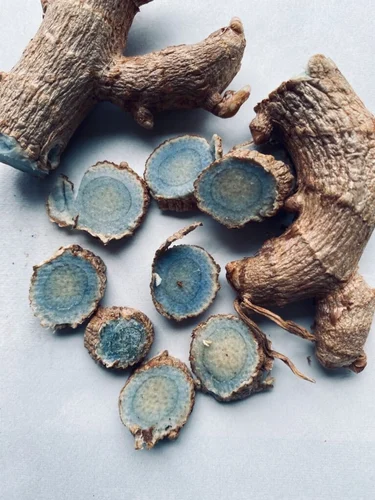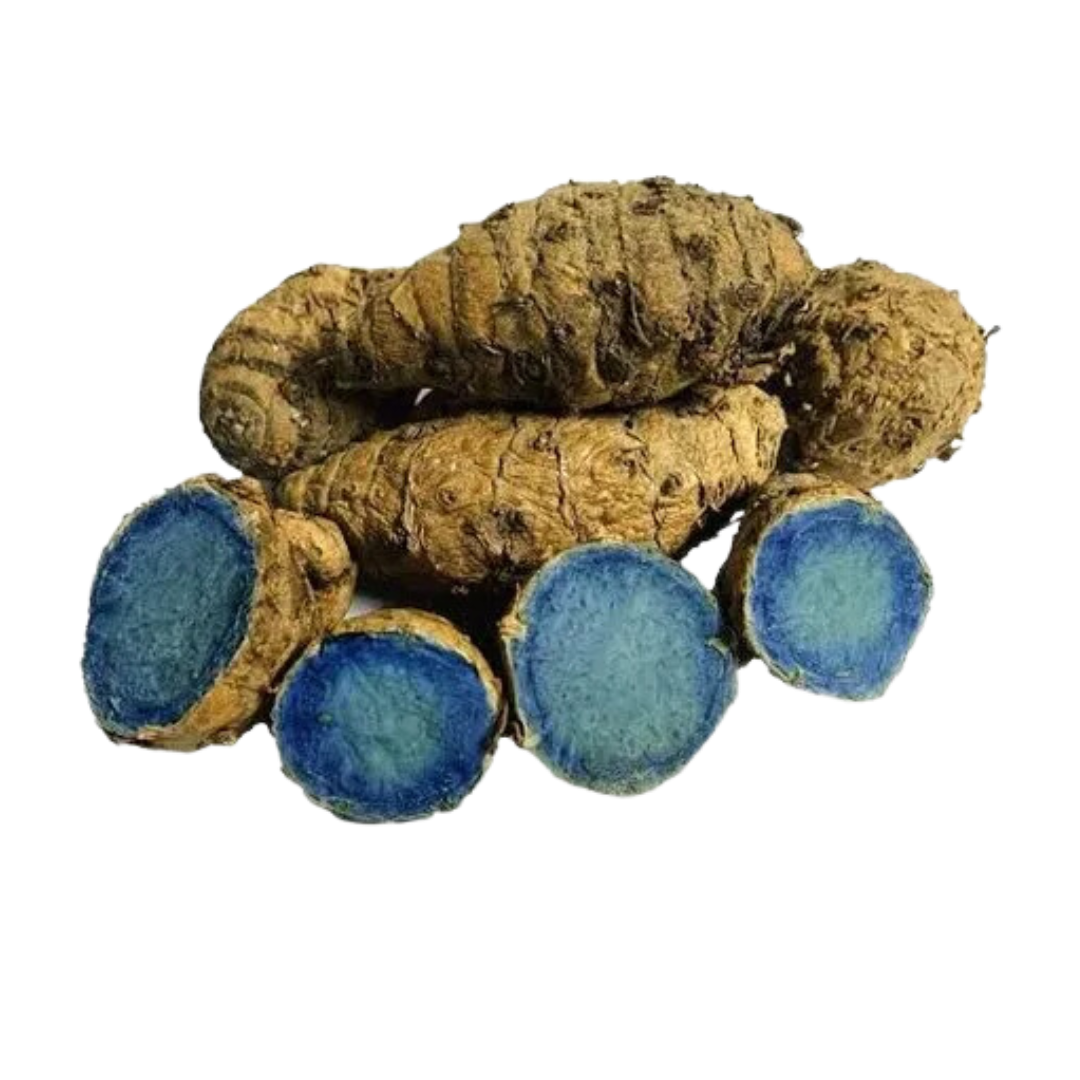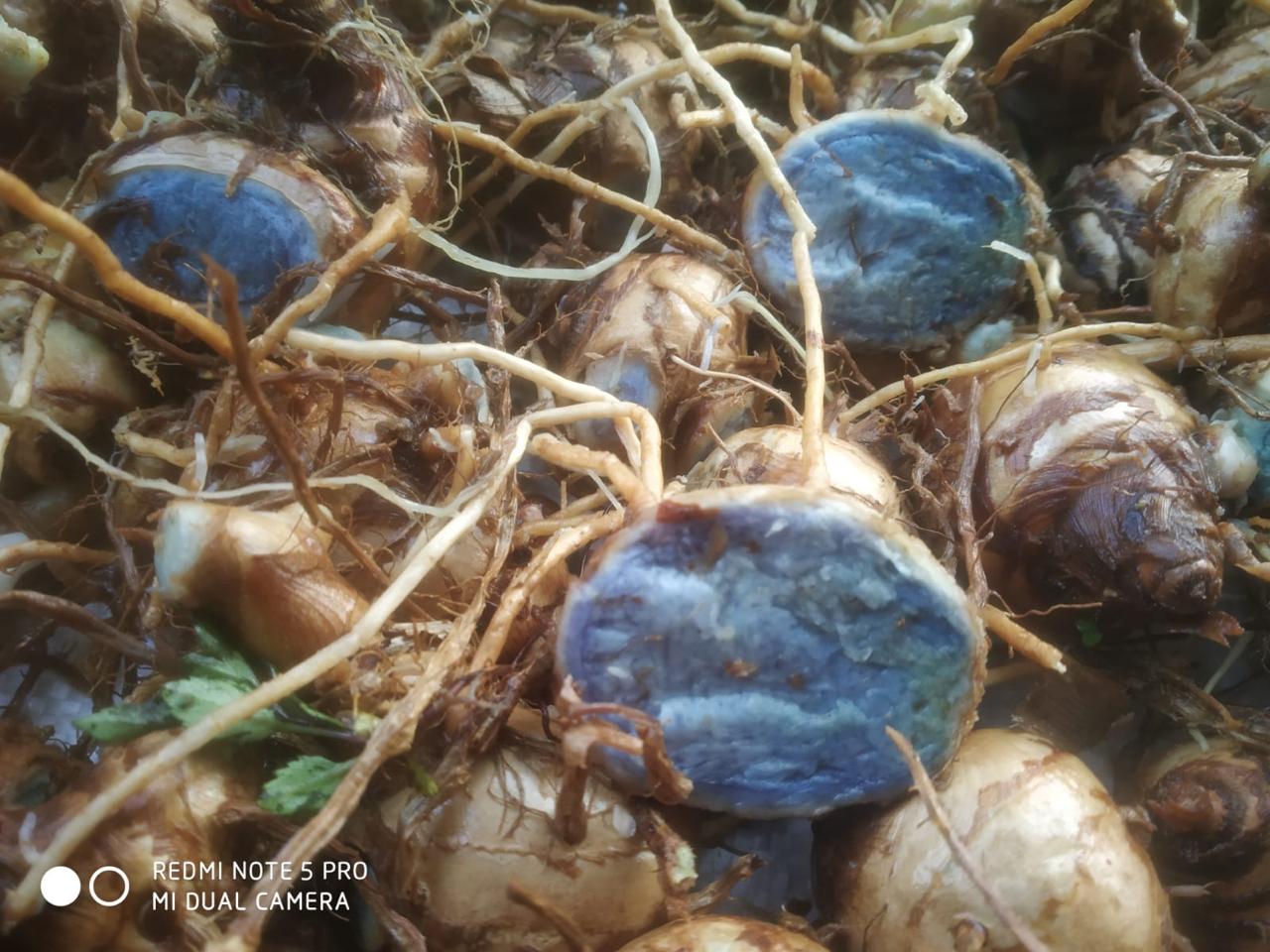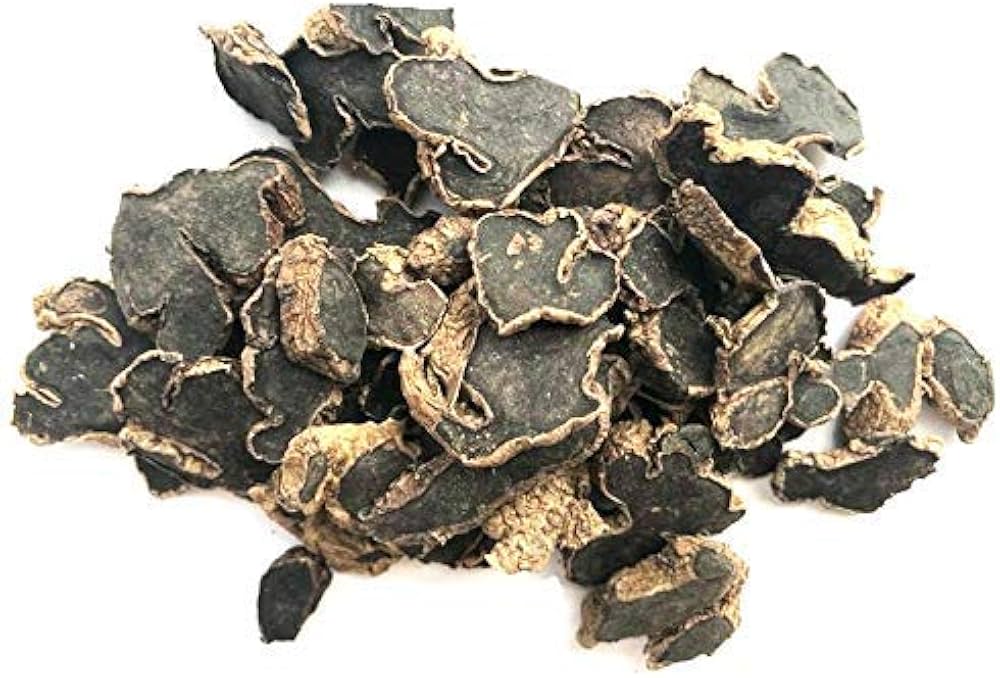🌑 Black Turmeric (Kali Haldi): The Sacred & Medicinal Rhizome
1. Origin in India
Botanical Name: Curcuma caesia
Black Turmeric, known locally as “Kali Haldi”, is a rare and sacred variety of turmeric native to northeastern and central India, especially:
Assam, Odisha, West Bengal
Forested areas of Chhattisgarh, Jharkhand, Madhya Pradesh, and Andhra Pradesh
Grown by tribal communities using traditional methods in shaded forested regions with rich, loamy soil and good drainage.
2. Unique Characteristics & Uses
Appearance:
Externally, it resembles regular turmeric.
Internally, it has a deep blue-black or purplish core.
Has a camphor-like, pungent aroma.
Primary Uses:
Traditional and tribal medicine (Ayurveda, Siddha, Unani).
Used in Hindu rituals, especially during Kali Puja, for its spiritual significance.
Folk remedies for respiratory, digestive, and skin issues.
Used in cosmetics and natural dyes.
3. Medicinal Properties
Black Turmeric is rich in curcumin, essential oils, and antioxidants, and is considered more potent than regular turmeric in some herbal traditions.
🔬 Key Health Benefits:
Anti-inflammatory & Analgesic: Used to treat arthritis, joint pain, and swelling.
Respiratory Relief: Helps in asthma, bronchitis, and colds when consumed with honey or ghee.
Antiviral & Antibacterial: Fights infections and boosts immunity.
Digestive Aid: Improves liver function and reduces bloating, gas, and acidity.
Cancer Research: Shows promise in cancer cell inhibition (ongoing scientific studies).
Wound Healing: Applied as a paste to treat cuts, wounds, and insect bites.
Menstrual & Fertility Health: Traditionally used for balancing hormones and managing cramps.
4. Harvesting Process
Cultivation Season: Planted in spring or early monsoon (June–July) and harvested in winter (December–February) after 8–10 months of growth.
Steps:
Grown organically in semi-shaded or forested land.
Hand-harvested to prevent damage to delicate roots.
Cleaned and sun-dried naturally to retain active compounds.
Stored in cool, dark areas or stone-ground into powder for medicinal use.
5. Sustainability & Farmer Empowerment
Cultivation of Lakadong turmeric helps in:
Promoting organic farming in remote tribal areas.
Empowering women and indigenous communities who manage small land holdings.
Preserving biodiversity and traditional farming practices.
6. Spiritual and Ritual Significance
Considered a tantric root in Indian spirituality.
Often used in Kali Puja, Diwali, and other tantric ceremonies to invoke protection and power.
Known as a symbol of energy transformation and spiritual healing.
7. Comparison with Regular Turmeric
| Property | Regular Turmeric | Black Turmeric (Kali Haldi) |
|---|---|---|
| Color Inside | Yellow/Orange | Deep Blue/Black |
| Aroma | Mild & earthy | Strong, camphor-like |
| Medicinal Potency | General | High – especially in Ayurveda |
| Curcumin Content | 2–3% | 5–8% (with volatile oils) |
| Availability | Common | Rare, grown in forested regions |
| Use in Worship | Limited | Highly used in rituals and tantra |
8. Precautions & Usage Notes
Black turmeric is very potent; must be used in small, controlled doses.
Always consult an Ayurvedic practitioner before internal use.
May stain clothes and surfaces due to its rich natural color.
